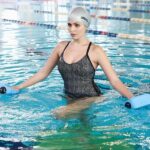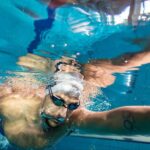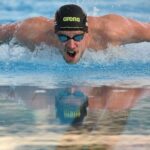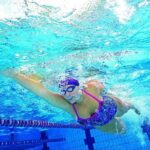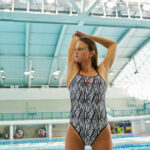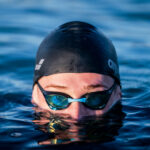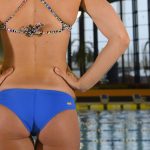IM in training: when, where, how and why
The main purpose of IM training is a matter of debate both among swimmers and their coaches.
In reality, the IM should not be seen as four separate strokes but as one single swim style involving a wide variety of movements. That is why there are so many different training philosophies. Generally speaking, freestyle is the main stroke used in training sessions to improve swim skills. The second most popular stroke – particularly for quality sessions or when practicing swimming at race pace – is the so-called “best stroke”.
The “best-stroke” philosophy does not apply to IM swimmers.
For IM’ers, the specificity of swim skills involved is more complex than that required of swimmers focusing on just one or two strokes. This inevitably means training sessions are structured differently.
Let’s see how you can organize your training in three one-hour-long sessions per week. During the week:
- Each stroke will have a particular day devoted to it with the exception of freestyle. That will be incorporated in every session.
- After warming up and before the main training session, do a short specific IM drill.
- This is followed by a specific workout for the day’s stroke (both the complete stroke and just legs) and a workout for just freestyle arms.
The distance set for each day should be divided up into shorter sections to recover energy so you can repeat the drill with more fuel in the tank.
In this example, lo = legs only, ao = arms only and ex = technical drills.
Session 1 (butterfly)
- 600 warm-up (ex lo ao)
- 300 m medley (e.g. 6 x 50) 400 m butterfly (e.g. 2 x 8 x 25 with 20 secs rest)
- 300 butterfly lo (e.g. 3 x 100 with 15 secs rest)
- 600 m sprint ao (possibly intervals)
Total: 2200 m (88 laps)
—
Session 2 (backstroke)
- 600 warm-up (ex lo ao)
- 400 m medley (e.g. 4 x 100 with 20 secs rest)1000 m backstroke (lo) intervals (e.g. 6 x 100 with 20 secs rest + 8 x 50 with 15 secs rest)
- 400 m FS lo intervals (e.g. 200 with 25 secs rest + 100 with 15 secs rest + 2 x 50 with 10 secs rest)
Tot. 2400 m (96 laps)
—
Session 3 (breaststroke)
- 700 warm-up (ex lo ao)
- 300 m medley (e.g. 4 x 75 with 15 secs rest)
- 400 m breaststroke (e.g. 16 x 25 with 7 secs rest)
- 400 m breaststroke lo (e.g. 8 x 50 with 10 secs rest)
- 400 m FS ao without stopping
Tot. 2200 m (88 laps)
From a physical training viewpoint, there is also a big difference. The number of muscles involved in a medley race is higher than in a race involving just one swim stroke and your joints will come under greater stress.
That is why gym workouts tend to be longer, focusing on exercises for various muscle groups and circuit training including exercises working on different muscle groups at different intensities (or speeds).
In my opinion and from an organic viewpoint, this is the most complex, tricky and interesting swim stroke that requires most dedication but is also the most fun to practice.
Enjoy your training!
Download the training set (PDF) | Printable version
—————
Are you looking for the ideal training swimsuit for your own specific needs? Take a look here!
Written by:
arena coaches
Swim coaches, trainers and experts will give you all kinds of tips for performing at your best in both training and races.
